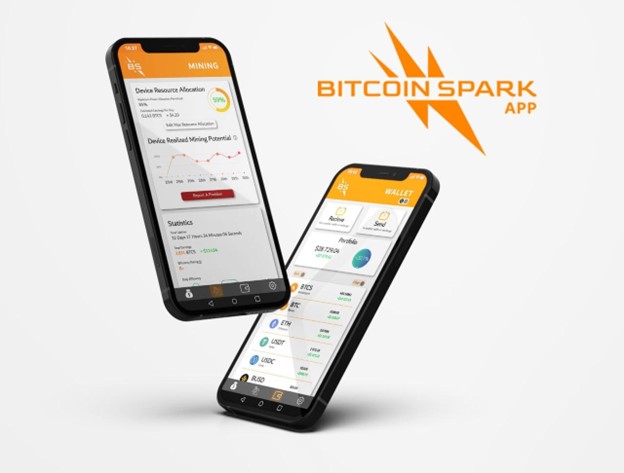Cryptocurrency mining has been a topic of debate for some time now. To understand how mining is evolving, let’s delve into a dynamic comparison between Bitcoin Spark (BTCS) and Ethereum (ETH).
How to mine Ethereum
Ethereum mining is no longer possible due to a significant transition known as The Merge. The Ethereum blockchain initially used a Proof-of-Work (PoW) consensus mechanism, which involved miners competing to solve mathematical equations in order to verify transactions and add them to the blockchain. The miners received rewards in the form of new ETH and transaction fees.
However, the PoW system requires significant energy and computing resources, which led to concerns about scalability, environmental degradation, and centralization. This caused Ethereum to move to a Proof-of-Stake (PoS) consensus mechanism, which relies on validators who are chosen to create new blocks and validate transactions based on the amount of ETH they hold and are willing to stake as collateral. To become an Ethereum validator, you need a stake of at least 32 ETH. You will be rewarded with additional ETH in return for your honest validation efforts.
While Ethereum’s move to PoS has provided remedies to the energy usage and scalability issues related to crypto mining, questions are still being raised about the potential of centralization since those with massive amounts of ETH are favored in the validator selection process.
What is Bitcoin Spark?
Bitcoin Spark is a new crypto that aims to address the limitations of traditional cryptocurrencies and usher in a new era of digital transactions. It has been referred to as the new Bitcoin because it shares similarities with the original cryptocurrency, such as having a limited supply of 21 million and using mining as a concept of network validation. However, Bitcoin Spark’s mining process is significantly different.
How to mine Bitcoin Spark
The Bitcoin Spark network has a massive number of nodes, which reduces energy consumption per node by tapping into diverse energy sources, making the overall network more energy-efficient and reducing the investment required by miners. This also enhances decentralization and security by allowing more individual miners within the network, greatly reducing the chances of a single miner becoming too powerful.
Additionally, Bitcoin Spark uses its own consensus mechanism called the Proof-of-Process (PoP). The PoP will reward miners for confirming blocks and contributing the processing power of their mining devices to the network. This mechanism incorporates an algorithm that diminishes rewards per additional power, promoting a fairer distribution of rewards. Additionally, the Bitcoin Spark network will provide an application that allows Windows, Mac OS, Linux, iOS, and Android users to mine.

To mine Bitcoin Spark, you will need to install the Bitcoin Spark application and grant it access to your device’s processing unit. It will also require some higher-level device permissions, such as resource management, but will not require access to other permissions, such as media files or phone capabilities. The application will then create a separate virtual processing environment within your device, ensuring no interference with other functions. Moreover, it will dynamically adjust the processing power to account for factors like overheating, battery life, and concurrent device usage. You can customize the allocation of device resources, optimizing the mining activity based on individual preferences and schedules. This groundbreaking approach significantly reduces the work and power required for mining.
The Bitcoin Spark network will rent out miners’ processing power to clients requiring significant computational power, who will pay with BTCS. The revenue generated from this service will be allocated to the mining pool, where it supplements the BTCS minting rewards. That means that miners within the Bitcoin Spark network will be rewarded in a distinct way, receiving new BTCS coins, transaction fees, and income from renting out processing power that could have otherwise stayed dormant.
The investments made in Bitcoin Spark’s Initial Coin Offering (ICO) suggest significant interest. The ICO is currently in phase 4, offering investors a chance to get BTCS early at $2.25, which is accompanied by a 10% bonus.
For more information on Bitcoin Spark:
Website: https://bitcoinspark.org/
Buy BTCS: https://network.bitcoinspark.org/register
Disclaimer: This is a paid release. The statements, views and opinions expressed in this column are solely those of the content provider and do not necessarily represent those of NewsBTC. NewsBTC does not guarantee the accuracy or timeliness of information available in such content. Do your research and invest at your own risk.














